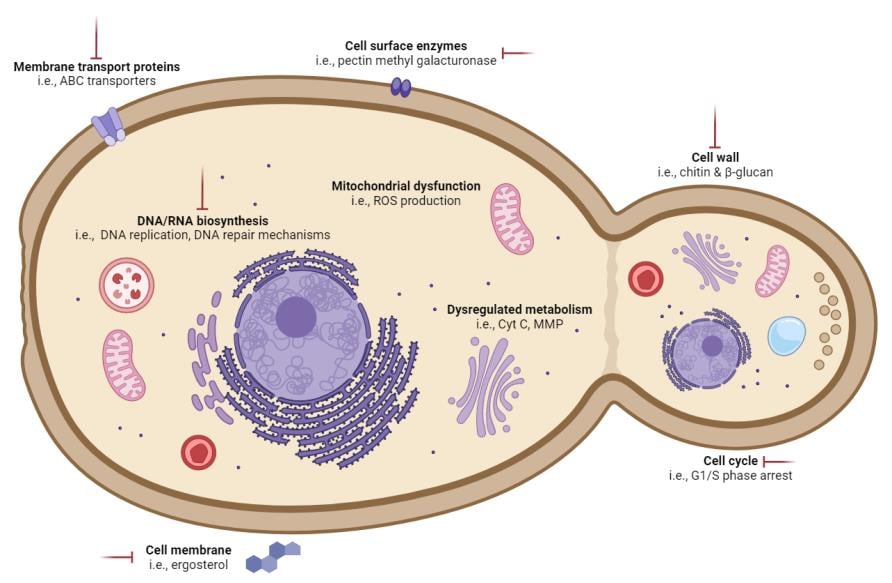Lemongrass has the potential to control the growth of fungi from skin mycoses, foodborne illnesses and opportunistic infections
06 Mar 2025

Lemongrass is an abundant medicinal plant that is used as an herbal remedy for fungal infections. Despite being widespread, to our knowledge, there have been no attempts to review current literature on the antifungal properties of lemongrass. To this, we attempt to summarize current literature on the antifungal properties of lemongrass to determine the depth of research and identify literature gaps to help provide direction for future investigations on the topic. We collected data on the plant part utilized, type of extract and extraction method, test organism used, antifungal assay used, antifungal effect, as well as the proposed mechanism of antifungal action, literature gaps, and conclusions established across studies from years 1993 to 2023. Studies were obtained from the databases Web of Science, MEDLINE, and EBSCO CINAHL. Findings from the study showed that leaves, hydrodistillation, Candida albicans, GC-MS, and diffusion assays were most commonly used. Lemongrass was suggested to primarily target the fungal cell membrane and cell wall. However, further studies are necessary to validate the potential efficacy of lemongrass.
This scoping review aims to consolidate the current patterns and trends across studies on the antifungal properties of Cymbopogon citratus (DC.) Stapf, while synthesizing a possible mechanism of action from the results of these studies on its viability as a treatment for various types of fungal-borne diseases. The findings of this review can serve as the basis for the development of lemongrass-based herbal medicines for widespread use as treatments for highly prevalent fungal infections. Specifically, this scoping review highlights the potential applications of lemongrass plant extracts in controlling the growth of fungi associated with various skin mycoses, foodborne illnesses, and opportunistic infections. To our knowledge, this scoping review shall be the first to consolidate the current state of research on the antifungal properties of lemongrass.
Authors:
Robbi Miguel G. Falcon (College of Medicine, University of the Philippines Manila), Serina U. Fahrenbach (College of Medicine, University of the Philippines Manila), Jeremiah F. Feliciano (College of Medicine, University of the Philippines Manila), Bea Micah B. Flores (College of Medicine, University of the Philippines Manila), Aisha S. Dida-Agun (College of Medicine, University of the Philippines Manila), Eldrin Jalen V. Domingo (College of Medicine, University of the Philippines Manila), Francis Kiro S. Domingo (College of Medicine, University of the Philippines Manila), Helene Elise T. Duran (College of Medicine, University of the Philippines Manila), Darryl B. Dungala (College of Medicine, University of the Philippines Manila), Garret Royce K. Dychiao (College of Medicine, University of the Philippines Manila), Paul Emmanuel D. Evangelista (College of Medicine, University of the Philippines Manila), Haggai Elisha L. Facon (College of Medicine, University of the Philippines Manila), Francis Elmo R. FlorCruz (College of Medicine, University of the Philippines Manila), Mary Hazel B. Florita (College of Medicine, University of the Philippines Manila), Maria Stella T. Giron (Department of Pharmacology and Toxicology, College of Medicine, University of the Philippines Manila) and Ailyn M. Yabes (Department of Pharmacology and Toxicology, College of Medicine, University of the Philippines Manila | Institute of Herbal Medicine, National Institutes of Health, University of the Philippines Manila)
Read full paper: https://doi.org/10.1016/j.sajb.2024.05.042
